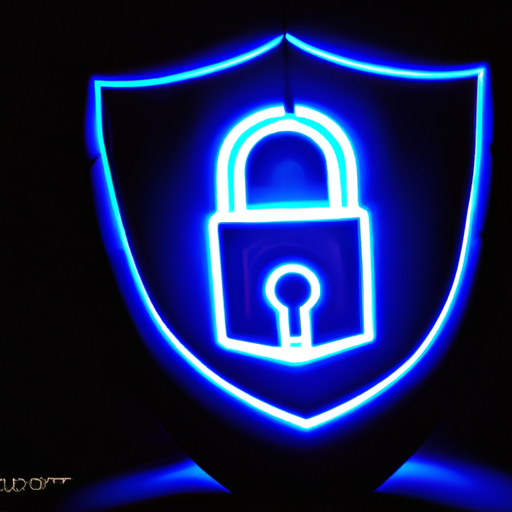Should We Consider Conducting Joint Continuity Drills With Our Key Business Partners?
In today’s ever-changing business landscape, it’s crucial to ensure the seamless continuity of operations in the face of unexpected disruptions. That’s why the question arises: should you consider conducting joint continuity drills with your key business partners? By aligning your efforts and collaborating with your partners, you can strengthen your overall resilience and minimize the potential impact of any unforeseen events. Let’s explore the benefits and considerations of this proactive approach to safeguarding your collective success.
Benefits of Joint Continuity Drills
Strengthening Collaboration and Communication
Joint continuity drills offer numerous benefits to businesses, particularly in fostering collaboration and communication among partners. By engaging in these drills, you have the opportunity to work closely with your key business partners, allowing you to strengthen your relationships and develop a shared understanding of each other’s continuity plans. This collaborative approach ensures that everyone is on the same page and can effectively respond in times of crisis or disruption.
Enhancing Understanding of Partner’s Continuity Plans
Another significant benefit of joint continuity drills is the opportunity to gain a deeper understanding of your partner’s continuity plans. Through these drills, you can assess each other’s strategies, procedures, and protocols, allowing you to identify potential gaps or areas for improvement. This insight enables you to align your plans more effectively, enhancing the overall resilience of your partnership and reducing the risk of disruptions.
Identifying and Addressing Gaps in Interoperability
Interoperability, or the ability to work together seamlessly, is crucial for successful business partnerships. Joint continuity drills serve as a valuable testing ground for evaluating the interoperability of your systems, processes, and technologies. By identifying any gaps or challenges in interoperability, you can proactively address these issues, ensuring that your partnership can operate smoothly even during unexpected events.
Building Trust and Confidence
Joint continuity drills have an invaluable impact on trust and confidence between business partners. Through these drills, you demonstrate a commitment to preparedness and resilience, reassuring your partners that you take their business continuity seriously. Furthermore, the collaborative nature of these drills fosters a sense of mutual reliance, which strengthens the trust and confidence between you and your partners. This trust forms the foundation for successful partnerships and effective response in times of crisis.
Streamlining Business Processes
Engaging in joint continuity drills can significantly streamline your business processes. Through these drills, you can identify and eliminate redundancies, clarify roles and responsibilities, and develop streamlined protocols for quick decision-making and communication. The optimization of your processes not only enhances your operational efficiency but also minimizes the potential for errors or miscommunication during critical incidents.
Considerations for Joint Continuity Drills
Identifying Suitable Partners
When considering joint continuity drills, it is important to identify suitable partners who will actively contribute to the process. Look for partners who share your dedication to preparedness and have compatible business continuity plans. Their commitment and expertise will greatly enhance the effectiveness of the drills and ensure mutually beneficial outcomes.
Establishing Clear Objectives
Before conducting joint continuity drills, it is essential to establish clear objectives. Clearly define what you aim to achieve through these drills, whether it is improving collaboration, testing the interoperability of systems, or identifying and addressing gaps in continuity plans. Establishing clear objectives enables you to focus your efforts and evaluate the success of the drills accurately.
Planning and Scheduling Drills
Proper planning and scheduling are critical for the success of joint continuity drills. Collaborate with your partners to determine the most suitable time and duration for the drills, taking into account everyone’s availability and operational considerations. Additionally, develop a comprehensive plan that outlines the specific scenarios, actions, and evaluation criteria for each drill. This detailed planning ensures that the drills are structured and productive.
Securing Necessary Resources
To conduct joint continuity drills effectively, it is essential to secure the necessary resources. Allocate the required budget, personnel, equipment, and facilities to support the drills. Adequate resources ensure that all participants can actively engage in the drills and fully utilize the opportunity to enhance their preparedness and resilience.
Ensuring Participation and Commitment
The success of joint continuity drills relies on the active participation and commitment of all partners involved. Encourage open communication, collaboration, and commitment to the drills’ objectives from the outset. Engage all stakeholders in the planning process and address any concerns or resistance to participation. By fostering a culture of commitment, you can ensure that everyone fully embraces the benefits of these drills.
Steps in Conducting Joint Continuity Drills
Preparation Phase
The preparation phase sets the foundation for successful joint continuity drills. During this phase, collaborate with your partners to define the drill objectives, select suitable scenarios, and establish a realistic timeline. Develop a comprehensive plan detailing the roles, responsibilities, and resources required for each drill. Communicate the plan with all participants, ensuring that everyone understands their roles and expectations.
Execution Phase
The execution phase is when the drills take place. Follow the predetermined plan and scenarios, engaging all participants in realistic simulations and exercises. Foster effective communication, collaboration, and decision-making throughout the drills, ensuring that everyone actively contributes and stays engaged. Document all relevant data, observations, and outcomes for later evaluation.
Evaluation Phase
The evaluation phase is crucial for measuring the effectiveness of joint continuity drills. Analyze the data collected during the execution phase, comparing it against the predetermined objectives and key performance indicators (KPIs). Identify strengths, weaknesses, and improvement opportunities in your collaborative response efforts. Additionally, gather feedback from all participants and stakeholders to gain different perspectives and identify further areas for enhancement.
Measuring the Effectiveness of Joint Continuity Drills
Key Performance Indicators
To measure the effectiveness of joint continuity drills, establish key performance indicators (KPIs) that align with your objectives. These KPIs can include response time, accuracy of communication, effectiveness of decision-making, and successful recovery or continuation of critical operations. Regularly track and evaluate these KPIs to gauge the progress and impact of your joint continuity drills.
Lessons Learned and Improvement Opportunities
An essential aspect of measuring effectiveness is capturing the lessons learned and identifying improvement opportunities. Conduct a thorough analysis of the data, observations, and feedback gathered during the drills. Identify areas that require improvement, develop action plans to address these gaps, and integrate the lessons learned into your ongoing business continuity efforts. Continuously refining your approach based on the insights gained ensures that your joint continuity drills remain effective and impactful.
Challenges and Mitigation Strategies
Logistical Challenges
Conducting joint continuity drills with multiple partners can present logistical challenges. Ensure that you have a centralized communication system in place to effectively coordinate the drills and disseminate information. Regularly communicate and coordinate with all participating partners to address any logistical challenges promptly. Cultivate a culture of flexibility and adaptability to accommodate any unexpected changes or limitations that may arise.
Confidentiality and Security Concerns
Sharing sensitive information during joint continuity drills can raise confidentiality and security concerns. To mitigate these risks, establish confidentiality agreements among all participating partners. Implement secure communication channels and protocols to protect sensitive data. Regularly review and update your security measures to stay ahead of evolving threats.
Resistance to Change
Resistance to change can be a common challenge when introducing joint continuity drills. Some partners may be hesitant to invest time and resources into these drills or may have reservations about sharing their continuity plans. To overcome resistance, emphasize the benefits and value these drills offer, such as increased resilience, improved communication, and enhanced business partnerships. Engage in open and transparent communication to address concerns and provide reassurance.
Communication and Conflict Management
effective communication and conflict management are vital when conducting joint continuity drills. Encourage open dialogue and active listening among all participants to ensure that everyone’s views and concerns are acknowledged. Establish clear lines of communication, including escalation procedures, to address any conflicts or disagreements that may arise. Foster a collaborative and respectful environment that encourages constructive feedback and problem-solving.
Success Stories and Best Practices
Case Study: Company A and B Collaborative Drill
Company A and Company B embarked on a joint continuity drill to enhance their partnership’s resilience. Through this drill, they tested their interoperability, communication protocols, and mutual support mechanisms. The drill helped them identify areas for improvement and optimize their collaboration. As a result, both companies experienced improved response times, enhanced communication, and increased confidence in their ability to navigate disruptions together.
Lessons Learned from Previous Drills
Drawing from previous drills, several lessons have emerged as best practices in conducting joint continuity drills. It is crucial to establish a clear and realistic timeline, ensuring that adequate time is allocated to each phase of the drills. Regularly communicate and share information before, during, and after the drills to foster collaboration and maintain momentum. Document and analyze data to refine processes, and encourage a culture of continuous improvement among all participants.
Building a Comprehensive Joint Continuity Drill Framework
To build a comprehensive joint continuity drill framework, consider incorporating the following elements:
- Clearly defined objectives aligned with your business continuity goals.
- Realistic scenarios that emulate potential disruptions or crises.
- Structured planning and scheduling to optimize the drills’ effectiveness.
- Collaboration and active participation from all partners involved.
- Evaluation mechanisms to measure the drills’ impact and identify improvement opportunities.
- Documentation and dissemination of lessons learned for ongoing enhancement.
- Ongoing communication and coordination to maintain strong partnerships.
Conclusion
Conducting joint continuity drills with your key business partners offers numerous benefits that strengthen collaboration, enhance understanding, identify gaps, build trust, and streamline processes. By considering the considerations, steps, and challenges outlined in this article, you can pave the way for successful drills and resilient partnerships. Embrace the opportunity to learn, improve, and ensure the continuity of your business operations in the face of unforeseen disruptions.








